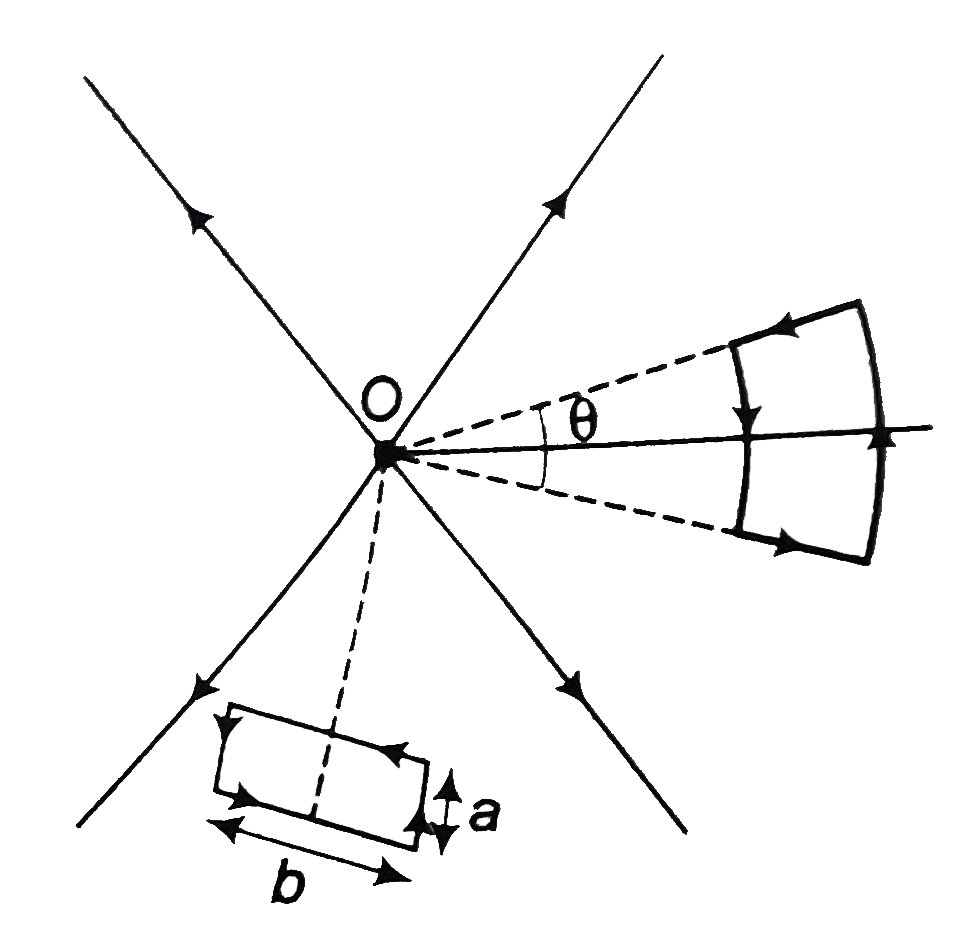A test charge q is made to move in the electric field of a point cahrge Q along two different clsoed parths [figure first path has sections along and perpendicular to lines of electric field. Second path is a rectangular loop of the same area as the first loop. how does the work done compare in the two cases?

Step by step video & image solution for A test charge q is made to move in the electric field of a point cahrge Q along two different clsoed parths [figure first path has sections along and perpendicular to lines of electric field. Second path is a rectangular loop of the same area as the first loop. how does the work done compare in the two cases? by Physics experts to help you in doubts & scoring excellent marks in Class 12 exams.
Updated on:21/07/2023Topper's Solved these Questions
- ELECTRIC POTENTIALBOOK - CENGAGE PHYSICS ENGLISHCHAPTER - ELECTRIC POTENTIALEXERCISE - DPP 3.4
15 Videos
- ELECTRIC POTENTIALBOOK - CENGAGE PHYSICS ENGLISHCHAPTER - ELECTRIC POTENTIALEXERCISE - DPP 3.5
15 Videos
- ELECTRIC POTENTIALBOOK - CENGAGE PHYSICS ENGLISHCHAPTER - ELECTRIC POTENTIALEXERCISE - DPP 3.2
15 Videos
- ELECTRIC FLUX AND GAUSS LAWBOOK - CENGAGE PHYSICS ENGLISHCHAPTER - ELECTRIC FLUX AND GAUSS LAWEXERCISE - MCQ s
38 Videos
- ELECTRICAL MEASURING INSTRUMENTSBOOK - CENGAGE PHYSICS ENGLISHCHAPTER - ELECTRICAL MEASURING INSTRUMENTSEXERCISE - M.C.Q
2 Videos
Similar Questions
A test charge q is made to move in the electric field of a point charge Q along two different closed paths. Fig. First path has sections along and perpendicular loop of the same area as the first loop. How does the work done compare in the two cases?

View SolutionA point charge q is rotated along a circle in the electric field generated by anotherj point charge Q. The work done by the electric field on the rotatin charge in one complete revolution is
View SolutionA uniformly charged disc of radius R with a total charge Q lies in the XY -plane. Find the electric field at a point at a point P, along the Z-a xis that passes through the centre of the discc perpendicular to its plane. Discuss the limit when R>>z.
Strategy : By treating the disc as a set of concentric uniformly charged rings, the problem could be solved by using the result obtained in example for ring. Consider a ring of radius of radius r' and thickness as shown in figure.
View SolutionIn the electric field of a point charge (+q) , placed at the centre of a circle , a certain test charge is carried from point A to B, C,D and E Least amount of work is done along the path

View SolutionA few electric field lines for a system of two charges Q1 and Q2 fixed at two different points on the x-axis are shown in the figure. These lines suggest that

View SolutionPlot a graph comparing the variation of potential ‘V’ and electric field ‘E’ due to a point charge ‘Q’ as a function of distance r from point charge
(ii) Find the ratio of the potential differences that must be applied across the parallel and the series combination of two identical capacitors so that the energy stored, in the two cases, becomes the same.
View SolutionThe variation of electric field between two charge q1 and q2 along the line joining the charges is plotted against distance from q1 (taking rightward direction of electric field as positive) as shown in the figure. Then the correct statement is

View SolutionBainbridge's mass spectrometer separates ion having the same velocity. The ions, after enteering through slits, S1 and S2, pass through a velocity selector composed of an electric field pproduced by the charged plates P and P' abd a magnetic field →B perpendicular to electric field and the ion path.Thew ions that then passs undeviated through the crossed →E1 and →B fields enter into a region where a second magnetic field →B exists, where they are made to follow circular path. A photographic plate ( or a modern detector) registors their arrival. If r is the radius of the circular orbit , then specific charge qm of ion is

View SolutionA bob of mass m is tied with a thread and is made to move in a circular path on a frictionless table surface about point 'O' as shown in diagram. A hypothetical electric field in radial direction exists along the table surface. In this condition the bob is uncharged and tension in the thread is T. If bob is given some charge-

View SolutionA long solenoid having n = 200 turns per metre has a circular cross-section of radius a1=1cm. A circular conducting loop of radius a2=4cm and resistance R=5(Ω) encircles the solenoid such that the centre of circular loop coincides with the midpoint of the axial line of the solenoid and they have the same axis as shown in Fig.

A current 't' in the solenoid results in magnetic field along its axis with magnitude B=(μ)ni at points well inside the solenoid on its axis. We can neglect the insignificant field outside the solenoid. This results in a magnetic flux (ϕ)B through the circular loop. If the current in the winding of solenoid is changed, it will also change the magnetic field B=(μ)0ni and hence also the magnetic flux through the circular loop. Obvisouly, it will result in an induced emf or induced electric field in the circular loop and an induced current will appear in the loop. Let current in the winding of solenoid be reduced at a rate of 75A/sec.
When the current in the solenoid becomes zero so that external magnetic field for the loop stops changing, current in the loop will follow a differenctial equation given by [You may use an approximation that field at all points in the area of loop is the same as at the centre
View Solution
